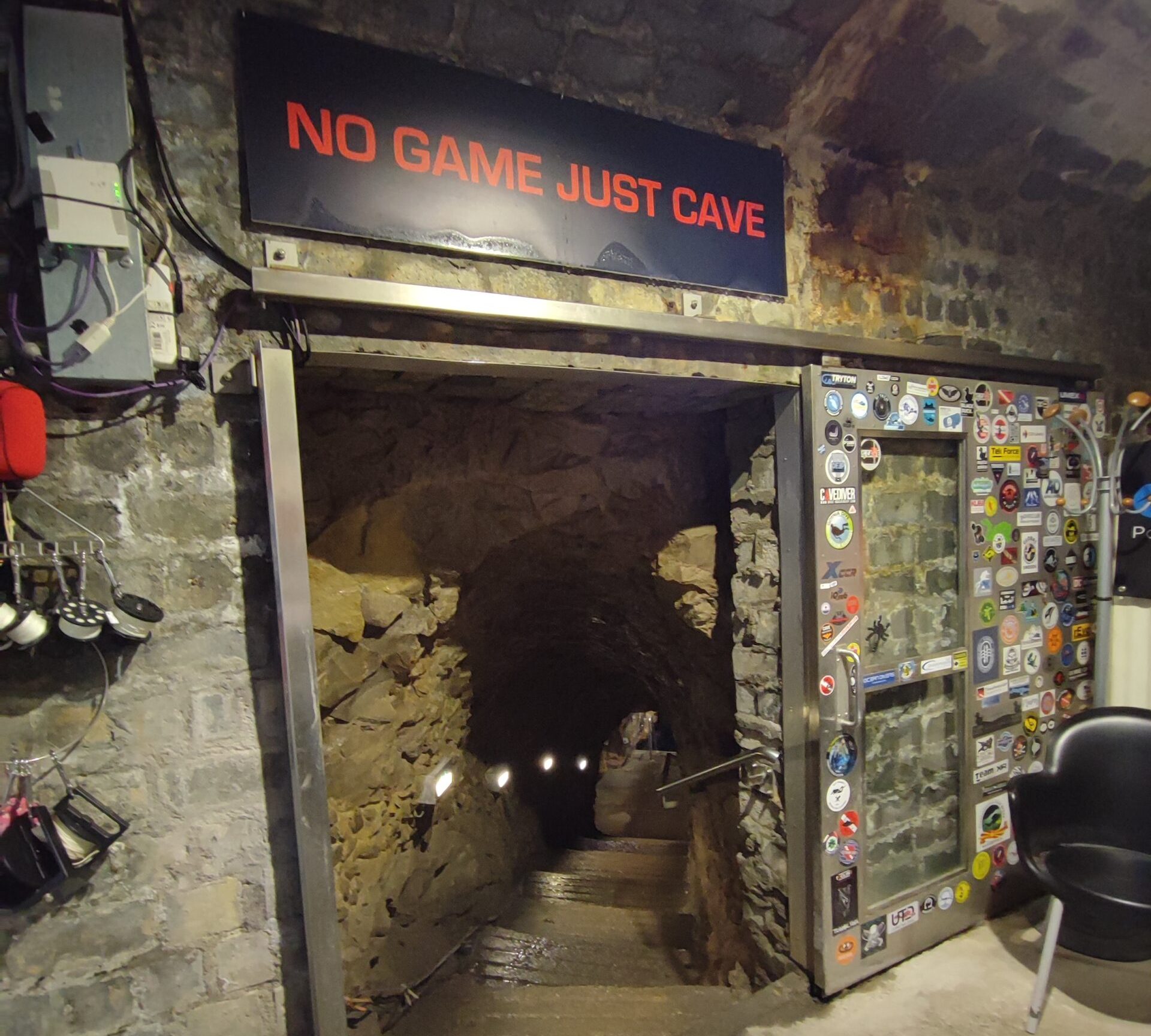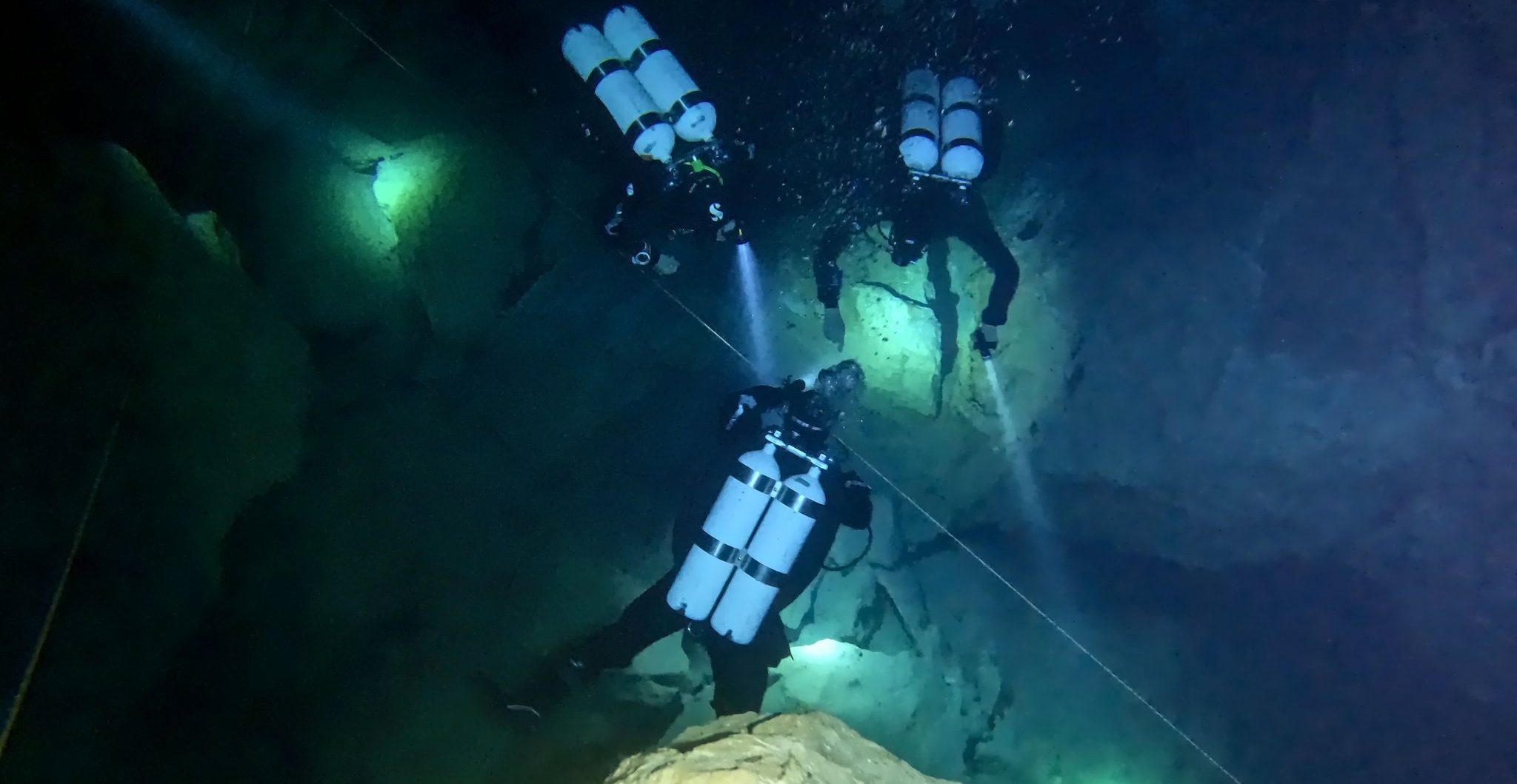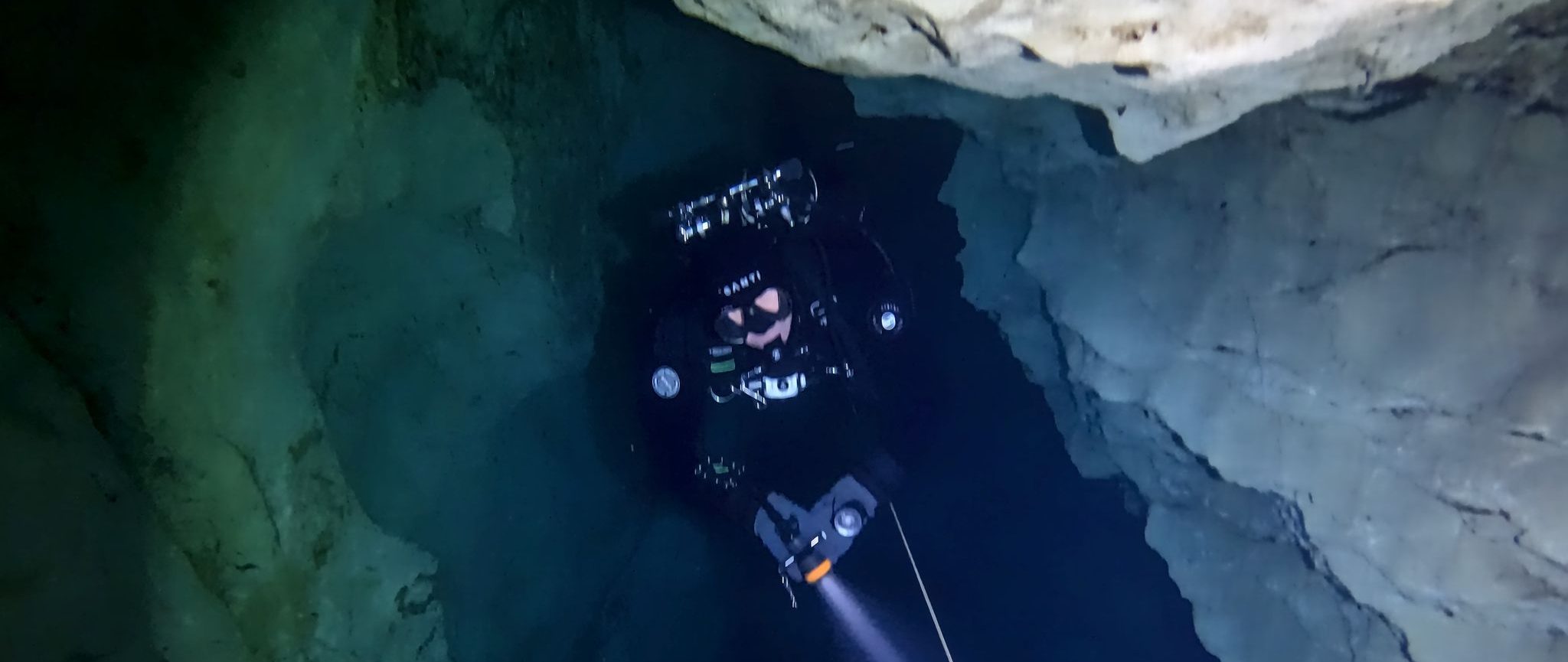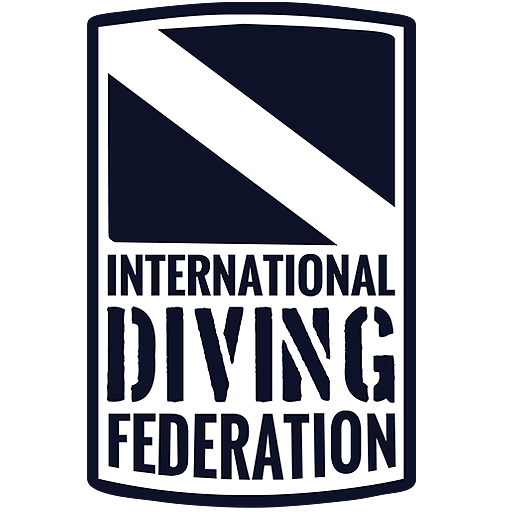This time, we are going to a not very distant and quite surprising place when it comes to diving travel. Budapest, the capital of Hungary, is not famous for access to amazing water reservoirs. Well, there is the Danube, beautiful and blue, but the Danube is not particularly suitable for diving. And yet Budapest has been on our diving wish list for many years.
On Thursday we packed all the gear into the car and hit the road. The route leads us through the Czech Republic and Slovakia, all the time along highways, you just need to remember to buy vignettes, preferably the day before, to make sure that comfortable driving will not end with a high fine. We arrive in Hungary in the early evening.

THROUGH BUDAPEST
We’re going to spend Friday wandering around Budapest. The capital of Hungary is a combination of three separate cities, separated by the course of the Danube: Buda, Óbuda and Pest, which in 1873 officially merged and together created one big city of Budapest. History drips here from almost every building and seeps from under the paving slabs 🙂


We will leave the car in front of the hotel, otherwise we would spend most of our time looking for parking spaces near tourist attractions. We only have one day to visit, so after a quick breakfast we set off on a trip and only late in the evening we return to our guest house. Tomorrow we’re going for what we like the most 🙂

FOLLOWING THE GOLLUM
Saturday greets us with the same foggy and gray aura. It’s 13 degrees outside. At 8.30, after breakfast, we pack the car and set the navigation to Molnar Janos Cave. On Friday we visited the city, we are going to spend Saturday and Sunday searching around the city 🙂 We are going to the city center, where, right next to the Margaret Bridge, in a side street, there is an entrance to a flooded cave system. This is our icing on the Hungarian cake!
We reach the gate of the diving center a few minutes before 9.00. The small base car park outside the gate is already full. We only go there for a moment to drop the heavy gear. However, we have to park the car on the street. Remember to arrive early in the future. We are greeted by a smiling, very nice girl – Eta. He shows us around the diving center and together we enter a long tunnel carved in the rock. The deeper you go, the higher the temperature. Well, after all, Budapest is famous for its thermal springs.


On the right side there is a solid, long top where you can leave your equipment, on the left there are places for clothes and drysuits and benches on which you can sit while changing. The tunnel is quite narrow, so tidiness is required here, nothing can be placed in the passage, because it will disturb other users. The organization of this place is really impressive. Right next to the entrance, wheelbarrows are placed in an even row against the wall, used to transport equipment. The staff of the base usually moves on scooters, otherwise, running back and forth after a whole day of work, they would have an impressive number of kilometers. In the middle of the corridor there is an entrance to the cave itself. Stone steps lead down to a large illuminated grotto filled with clear, warm water. Entering the water is facilitated by a comfortable platform and a solid metal ladder.
We unfold and turn our equipment on the places assigned to us. We check all elements. A spare computer, a spare mask, a main light and two spare flashlights, three cutting tools and spools of line are necessary. Buoys will not be needed here. Quickly check the operation of all equipment. Ready.


Discussion of diving is done by Eta. He is a technical and cave diver with a lot of experience, but today he deals with the maintenance of the base on the surface. Our first guide will be the owner of the base himself, Attila. We asked for a guide because we are here for the first time and we are not familiar with this cave. The first route will be the easiest, we discuss the rules, explain communication under water and after a while, we are ready to go down to the water. How warm! The water on the surface is 26 degrees. In the middle of Europe! At the end of October! I love this place! In the water, under the watchful eye of Attila, we do partner control. It’s okay, Attila nods. We can take a dip.
With wild joy I move into the fairy-tale world on the other side of the mirror. At 6 meters the fixed rope begins, from which we will not move more than a meter all the way. This is our Ariadne thread, additionally provided with directional arrows to facilitate return. About 10 meters we swim through the thermocline. Below, the water is cooler, it is “only” 20 degrees.
I do not know how it is possible, but the transparency of the water is still increasing. Were it not for the pressure effect, I could imagine that she wasn’t there at all. Silence, weightlessness, darkness illuminated only by shafts of light from flashlights held in hands. Cosmos! We flow slowly through corridors decorated with limestone formations, we pass wavy walls, lacy overhangs, columns and strange dripstones resembling statues. Sometimes the color of the surrounding rocks is light cream, sometimes it takes on shades of brown, gray and even deep black. Here and there, small caves filled with sharp, transparent outgrowths of crystals grin at us.


Attila puts his hand with a flashlight in one of them and the whole cave explodes with a reflected purple glow. Here and there I catch sight of a shell embedded in the rock or the remains of ammonites. We glide, and the fixed line leads us through narrow tunnels, other times through huge rock chambers, through openings resembling windows hanging above the blackness.
At some point, our guide stops, calls us to him and gestures to turn off the lights. We’re hanging in total blackness. Attila turns on the flashlight with ultraviolet light and after a while at the bottom of the cave we observe small, bright worms wandering about some things only known to them, which we would not be able to see in normal white light. It is fascinating that in such darkness, under millions of tons of rock, in high pressure, there is such a delicate, tiny life. How?! The dive lasts an hour. I reluctantly return to gravity. You have to fill the cylinders for the next dive and take a surface break.
Another guide, equally good and equally demanding, will go with us for the second dive.
We sail the next route, admiring the scenery that surrounds us. Every now and then some corridors leading to the side open up. They invite me, they call “look here, see what’s next” until I have to remind myself “Bee, don’t move from the rail!” Okay, I’m not moving. But the idea of doing another cave course is slowly hatching in my head.
My Cave Diver certificate entitles me to no-decompression diving in caves with fixed rigging and up to 200 meters from the entrance. The next step I want to take is Full Cave Diver, a course that will prepare me for decompression diving, without restrictions on distance and time under water. After such a course, I will be able to unfasten my own handrail tied to the main one, the so-called “jump”, and look into those side corridors that tempt me. Cool, right?
After successful dives we return to the hotel. To sleep. We no longer have the strength for any additional attractions.

CAVE WITHOUT A TOOTH…
On Sunday we planned to dive elsewhere. Diving Budapest is also famous for the flooded corridors of the former Kobanya brewery. However, we decide to stay in Molnar Janor, putting Kobanya off until next time. There are still so many routes here that we haven’t been on. The final argument that influenced our decision to change plans is the temperature of the water. 20 degrees here, 10 in Kobanyi.
For today’s dives we get another guide. He’s a nice young guy, he dives on a rebreather and doesn’t speak English. We don’t speak Hungarian either 😉 Out of necessity, the discussion is conducted by Attila. First with us. Later with him… Hmmm.
Perhaps our skills were rated so highly that they decided to assign us a new guide in the team, someone not fully familiar with all the routes? My doubts are dispelled after immersion. Anyway, as if every railing will lead us to the surface. We’ll manage. Both routes planned for today are a bit more demanding than yesterday’s. Lots of narrow passages, frequent changes of direction, wells and chimneys. More beautiful and more beautiful. At the end of the second dive, it turns out that I was partly right. The boy is really new here and doesn’t really know all the places he is supposed to show us.
We want to see an interesting fossil – a megalodon tooth from 4 million years ago, embedded in the rock. Can’t wait. The guide stops in a very narrow corridor, which means that the rest must also hang quietly. I can see he’s looking for something.


Poor Przemek is stuck in the middle of the passage from the vertical well to the corridor in which I am hanging. I move around a bit trying to give him as much space as possible. All right. It worked, but it’s getting even tighter. The boy, meanwhile, fumbles with the light on the light wall of the cave, inclined at an angle of 45 degrees. He does not find what he was looking for – probably a tooth ;/ – so he gently spreads the white sludge covering it with his hand … In the corridor, the visibility immediately drops to almost zero. Well, beautiful. Just in case, I grab the lifeline with my hand, trying to remember where I last saw the directional arrow …

Couldn’t find the tooth 🙁 It’s okay, without the tooth our dive was fantastic anyway! We do not turn back, we move forward and after a few moments and the obligatory safety stop we end the dive in a surprising place. This is not the entrance we have used all the time so far. The steel stairs at which we emerged lead not to the inside of the tunnel, but outside, right next to the diving base. Interesting and cool, but now we have a long hike in full gear on our backs back down the hall where we can undress. Such a psycho at the end 😉
It’s time to go home. It was a really great diving weekend. We will definitely come back here 🙂
This entry is a summary of the full report on the website www.lionfish.pl , we encourage you to read it in full.
About the author:

Anna Paszta – Pharmaceutical Processes Technologist by education, trader by profession, diver and traveler by passion. He has been diving since 2011, and for 10 years as a professional, he has been infecting new generations of lovers of the deep sea with his passion.
Initially, she worked in diving centers as a divemaster and instructor, and in 2015, together with her husband, she founded her own diving school “Lionfish” in Pruszków near Warsaw. Since then, she has completed hundreds of successful diving trainings and, together with the students, has made many interesting trips to the farthest corners of the world. She is most successful in initial training, and her hobby is working with diving youth.
Photos: Anna & Przemek Paszta




